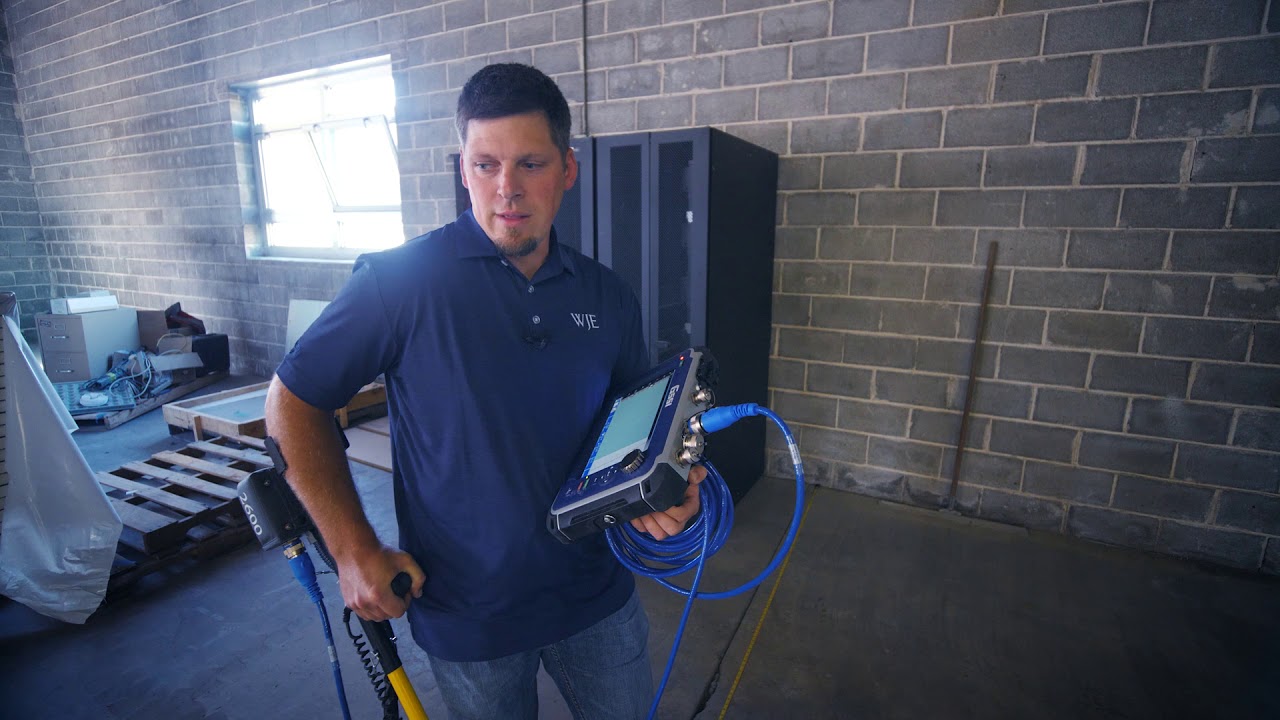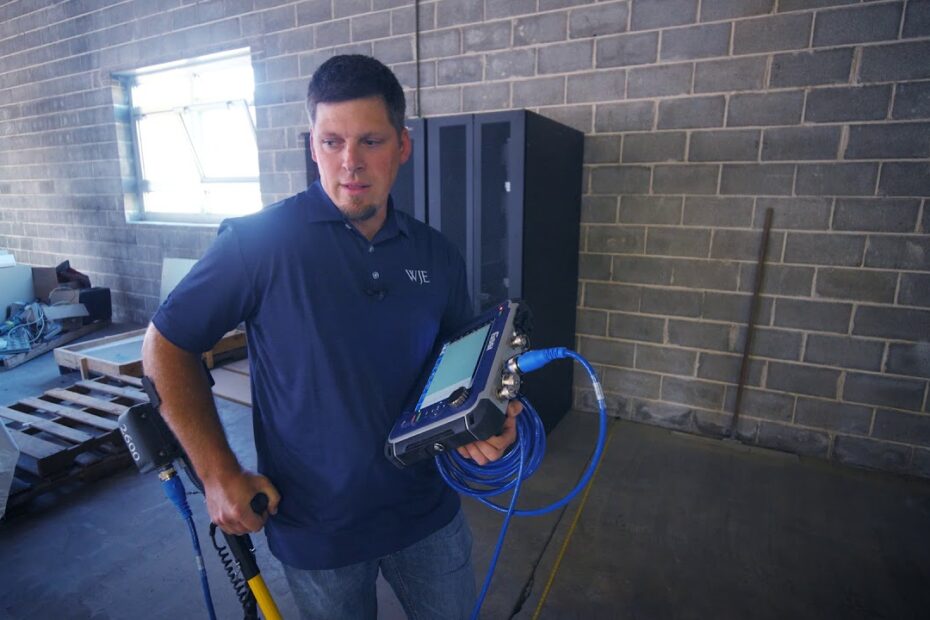Let’s discuss the question: how to detect voids under concrete. We summarize all relevant answers in section Q&A of website Activegaliano.org in category: Blog Marketing. See more related questions in the comments below.

How do you find underground voids?
A void detection survey using Ground Penetrating Radar (GPR) is a low risk method to scan an area of ground and determine the location and extents of underground voids, sinkholes and subsidence.
How do you fill a void under concrete?
Mudjacking. A type of sand-cement slurry (called “mud” in the industry) can be used to fill voids under concrete slabs. This mixture of sand, cement, and water is pumped through holes drilled in a slab foundation to fill voids underneath.
Solving for Why: Detecting Voids in Slabs with Ground Penetrating Radar
Images related to the topicSolving for Why: Detecting Voids in Slabs with Ground Penetrating Radar

What causes voids under concrete?
Voids are created when concrete is partially supported by base soils or through the use of anchors or rebar to foundation walls or through the use of Sonotubes. As the soil settles or is carried away by other means a gap opens up between the soil and the bottom of the concrete slab resulting in a loss of support.
Can GPR detect concrete?
GPR is an extremely useful tool in a variety of applications. Most popular uses of GPR in concrete are the non-destructive testing and mapping of objects inside the concrete, such as rebars, pipes, ducts, cables, etc. —as well as infrastructure assessment for bridges, roads, and buildings.
Where can I find voids?
- Washouts and settlement gaps beneath roadways.
- Mine workings and abandoned mines.
- Tunnels.
- Natural caves and solution features (karst limestone systems)
- Leaking pipes.
- Utilities and storm-water systems.
- Buried archaeological features.
Can sinkholes be detected?
Can sinkholes be detected? Ground Penetrating Radar (GPR) can be used to detect and map out the presence and extent of sinkholes, as well as underground voids and subsidence. A GPR void detection survey is a low-risk method to scan an area of ground and determine the location of sinkholes.
What is the best fill under concrete?
Because concrete is a very porous material, it will absorb any moisture that it contacts. This can cause pooling. Without crushed stone, pooling water will settle under it and erode your slab. Adding a layer of crushed stone will add proper drainage, as well as create a barrier between your slab and the ground.
How do you fill rodents under concrete?
Fill small holes with steel wool. Put caulk around the steel wool to keep it in place. Use lath screen or lath metal, cement, hardware cloth, or metal sheeting to fix large holes. These materials can be found at your local hardware store.
How can we prevent voids in concrete?
Use aggregate that is more uniform in shape. Irregular shaped pieces of aggregate tend to make the concrete less fluid. Techniques used during vibration can eliminate most surface voids. Vibrating both the outside and inside of your mold will draw most air and water bubbles away from the surface of the concrete.
What is a void under house?
In construction, a floor void is typically a vertical opening or hole that is left in the floor construction either to accommodate services, or allow the installation of a staircase or, as an aesthetic feature.
GPR void detection in concrete dam
Images related to the topicGPR void detection in concrete dam

How deep can you scan concrete?
GPR can scan at any depth
The GPR equipment in concrete scanning applications is only able to scan up to 20 inches. If we have access to both sides of the slab, then the analyst would be able to scan thicker concrete.
How much does GPR scanning cost?
Ground penetrating radar cost usually starts around $14,000 USD for a simple, single-frequency GPR system.
What does a void look like on GPR?
Like the image shown above, voids reveal themselves under a slab with GPR by exhibiting a sharply contrasting black-white banding. Often the contrast is either polar opposite of the banding in a normal GPR image or, it is much visually sharper in comparison to the surrounding image.
What is an underground void?
Void 101. More general than sinkholes, voids are below the surface gaps in the land. They can occur as a result of washouts or settlement gaps between the road or floor slab, ungrouted masonry cells, bubbles in poured concrete, tunnels, vaults, karst caves, or incipient sinkholes.
What is void detector?
Void detectors are normally normal detectors which are installed in ceiling voids or other voids in the building. Because these detectors are not in plain sight, they are often installed with a LED indicator below the area where they are installed so that the device can be monitored.
Which is an example of how sinkholes are detected?
Cracking on roads or pavement. A sudden drop of well levels on a site, as this could be indicative of a sinkhole opening up and changing the water table beneath the site with no surface expression. A small opening in the ground that rainwater seems to disappear into.
How do I know if there is a sinkhole under my house?
- Cracks in the walls.
- Cracks around the door or window frames.
- Cracks in the floor or pavement.
- Cracks in and around the pool area.
- Cracks in the foundation or the structure separating from the foundation.
- Not being able to close doors and windows correctly.
What are the first signs of a sinkhole?
- Fresh cracks in the foundations of houses and buildings.
- Cracks in interior walls.
- Cracks in the ground outside.
- Depressions in the ground.
- Trees or fence posts that tilt or fall.
- Doors or windows become difficult to open or close.
- Rapid appearance of a hole in the ground.
Is gravel necessary under concrete?
You do need gravel under a concrete slab, footing, or patio. Gravel provides a solid foundation for your concrete as it can be compacted. It also improves drainage, preventing water from pooling beneath the concrete.
Concrete Corrections Filling Voids Underneath a Slab
Images related to the topicConcrete Corrections Filling Voids Underneath a Slab

Do you need rebar for 4 inch slab?
For 4” concrete slabs used for driveways and patios, #3 rebar is common. Driveways that will support daily traffic by heavy trucks frequently use 1/2″ or #4 steel bar.
Can you mix concrete in the hole?
Fill the hole with Fast-Setting Concrete up to 3 to 4 inches below ground level. Pour about a gallon of water per 50 lb bag into the hole and allow the water to saturate the concrete mix. Wait about 4 hours to begin constructing your fence or applying heavy weight to your post.
Related searches
- diy fill void under concrete slab
- fill void under concrete slab diy
- ground penetrating radar rental
- best way to fill voids under a concrete slab
- great stuff to fill void under concrete
- sensors and software
- what are voids in concrete
- gpr 1000x
- gpr
- how to avoid voids in concrete
- cost to fill void under concrete slab
- fill void under concrete porch
Information related to the topic how to detect voids under concrete
Here are the search results of the thread how to detect voids under concrete from Bing. You can read more if you want.
You have just come across an article on the topic how to detect voids under concrete. If you found this article useful, please share it. Thank you very much.
